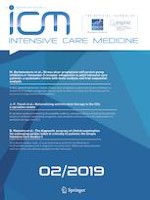Erschienen in:

26.11.2018 | What's New in Intensive Care
What’s new in the prevention of healthcare-associated infections using chlorhexidine gluconate-impregnated washcloths
verfasst von:
Sandrine Dray, Jean-Marie Forel, Laurent Papazian
Erschienen in:
Intensive Care Medicine
|
Ausgabe 2/2019
Einloggen, um Zugang zu erhalten
Excerpt
Critically ill patients hospitalized in intensive care units (ICUs) are at high risk for health care-associated infections (HAIs) in relation to their underlying conditions, comorbidities, impaired host defences, and the placement of invasive devices (endotracheal tubes, bladder catheters, and intravascular devices including catheters). These HAIs include surgical site infections, central line-associated bloodstream infections, catheter-associated urinary tract infections, ventilator-associated pneumonias (VAPs), and bloodstream infections. HAIs are strongly associated with prolonged length of stay, increased mortality and increased costs. In addition, the number of infections related to multidrug resistant organisms (MDROs) is increasing and is associated with a limited number of effective antimicrobial drugs. Many of these organisms such as methicillin-resistant Staphylococcus aureus (MRSA) and carbapenem-resistant Enterobacteriaceae colonize the skin of hospitalized patients. …